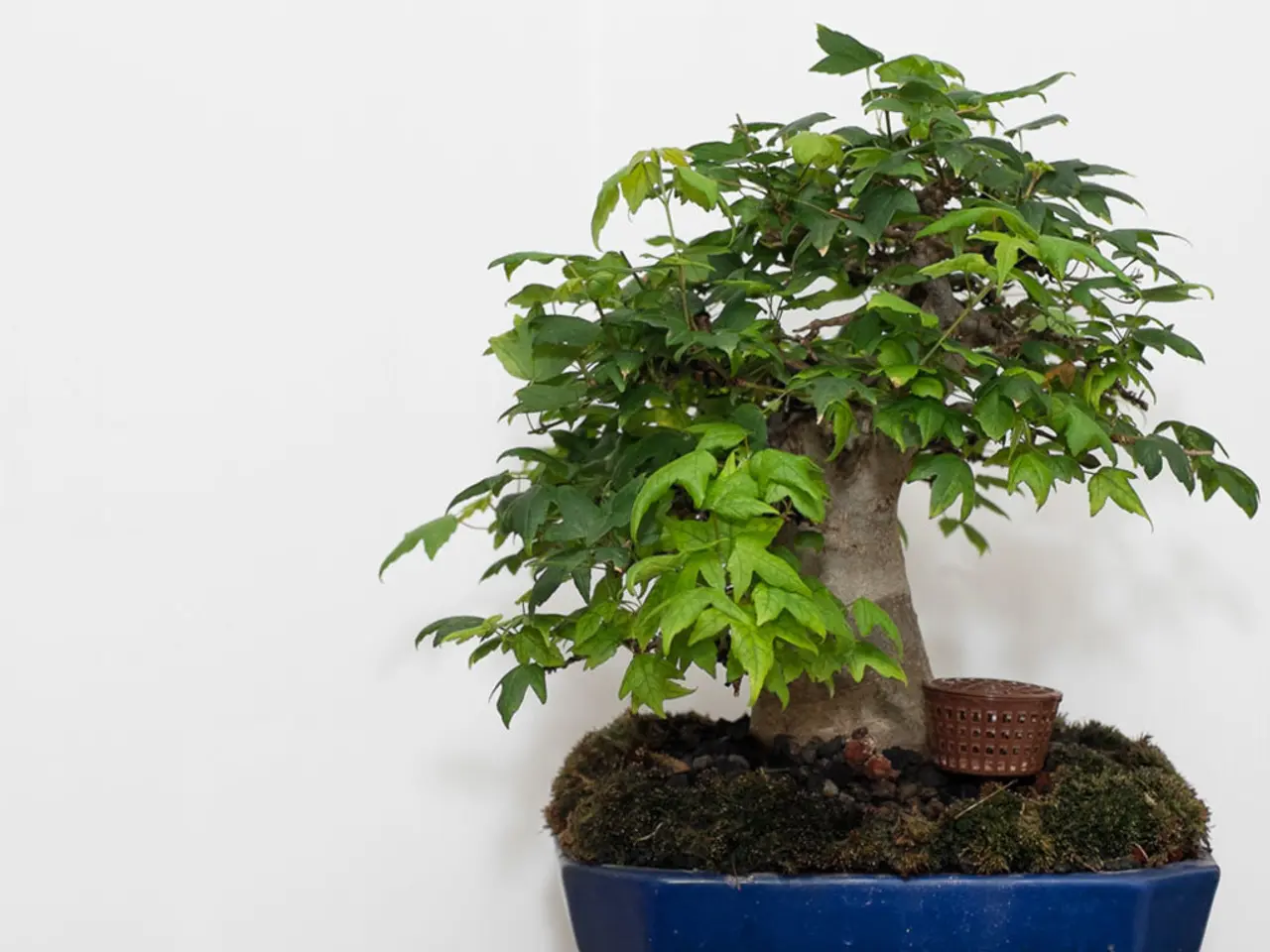Routine Examination and Early Detection are Crucial for Bonsai Health
Bonsai trees, with their miniature beauty, require careful attention to maintain their health and longevity. Subtle changes in a bonsai's appearance can signal potential issues that need prompt attention.
One of the most common signs of distress is yellowing or browning leaves, which may indicate improper watering, insufficient humidity, or nutrient deficiencies. Curling edges or dry leaves can signal heat stress or low humidity, while a lack of new shoots reflects poor overall health and possibly root problems.
Bonsai enthusiasts should also observe subtle changes in leaf reflectance or chlorophyll fluorescence for early detection of heat stress. Changes in leaf orientation, such as curling or twisting, may indicate stress or disease. Wilting or droopy leaves may indicate possible dehydration or root damage.
In low-humidity environments, watering frequency depends on factors like temperature, soil type, and tree species, usually every 2-3 days when the top 1-2 inches of soil feel dry to the touch. It's essential to use specialized bonsai soil to guarantee superior tree health and longevity, as regular potting soil may not provide the necessary drainage and aeration.
Indoor bonsai cultivation requires selecting species tolerant of shade, cleverly utilizing artificial lighting, and precision watering to create a harmonious balance. Bonsai trees thrive in temperatures between 65°F to 75°F (18°C to 24°C), with some species tolerating warmer temperatures up to 85°F (29°C).
Regular maintenance practices like monthly fertilizing, repotting every 1-2 years, and pest prevention (e.g., neem spray against mites and scale insects) help avert stress signs from escalating into irreversible damage. To protect bonsai trees from pests like spider mites and mealybugs, maintain good hygiene, isolate new plants, and regularly inspect your trees.
In summary, subtle signs requiring timely intervention are:
- Yellowing or browning leaves
- Dry, curling, or crispy leaf edges
- Absence of new growth
- Mushy or soft stems
- Foul smell from soil
- Changes in leaf reflectance or chlorophyll fluorescence indicating heat stress
Early recognition and adjustment of watering, light exposure, humidity, fertilization, and pest control routines are key to maintaining bonsai health. Regular observation enables bonsai enthusiasts to detect subtle changes, allowing for timely intervention and proactive care.
The gardening hobby extends beyond home-and-garden activities to include the meticulous art of bonsai, which necessitates attention to one's home-and-garden lifestyle for its maintenance. Observing subtle changes in a bonsai's lifestyle, such as yellowing leaves, can signal potential issues that require prompt attention, just as dry, curling, or crispy leaf edges may hint at low humidity or heat stress.




